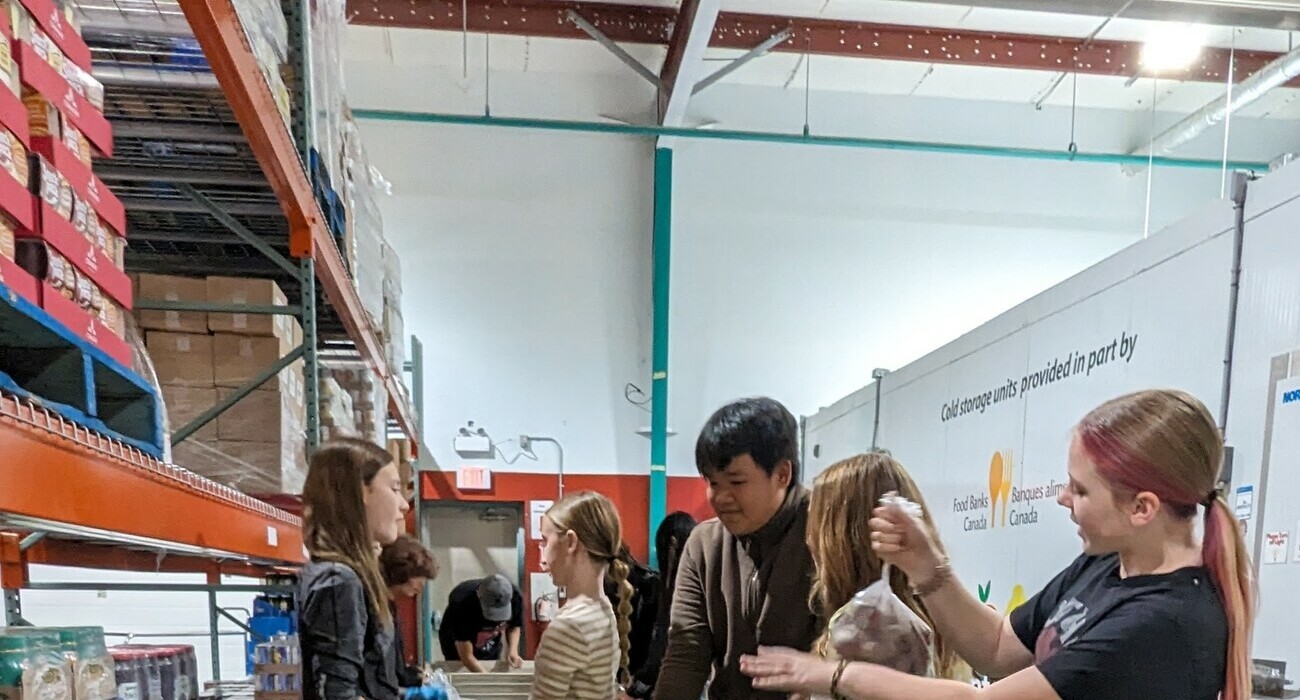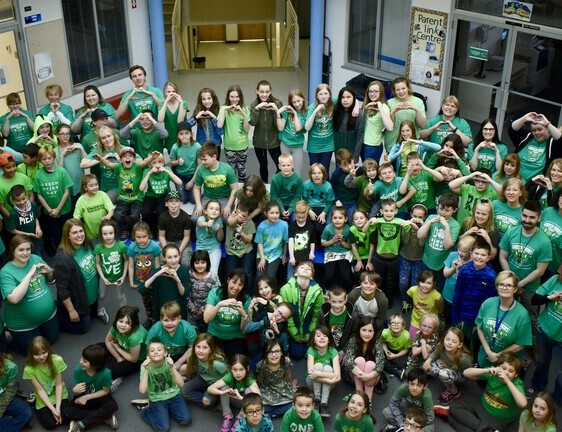
PICTURE BUTTE – That kitchen table talk about organ donation might not be as potentially uncomfortable at Meeya Arneson’s house than elsewhere.
The issue – sparked by the horrific aftermath of the Humboldt Broncos’ hockey bus crash and the selfless act of Logan Boulet’s decision to be an organ donor – has been a reality in her family circle for more than a dozen years.
Students at Picture Butte High School, including 13-year-old Meeya, are being asked to mark Green Shirt Day by pledging to talk with family members about the prospect of organ donations. They were asked to wear their green shirts to school to display their commitment to the conversation and pose for a group shot with Dorothy Dalgliesh School students from a drone high above the Palliser school.
The quiet, Grade 8 student is no rah-rah poster child for organ donation. If asked, however, Meeya has no qualms about sharing her thoughts on the subject.
“I think there should be organ donations, because what are you going to do with them when you’re dead?” says Meeya, adding she plans on registering as a donor when she’s legally old enough.
She plans on talking with her father about organ donations and says the prospect might be a little more awkward if his foster sister hadn’t received a life-saving heart transplant 14 years ago. She’d likely have many more questions if not for the personal connection.
“Yeah, probably, but that’s because I haven’t really seen that many (other) people who needed it,” says Meeya, who has since heard about the number of people on the waiting list for organs and the lack of people registered to donate.
Vice-Principal Greg Thompson, who has been spearheading Green Shirt Day at PBHS and around Palliser Regional Schools as a whole, points to surveys that show more than 90 per cent of Canadians feel organ donation is a good thing, but only 23 per cent are actually registered to donate.
“There are people dying every day in Canada because of it. If there was something that Logan did, it was to raise awareness of the need, and I don’t think anybody could ever imagine how this has taken off,” he says of the young hockey player and family friend who saved six lives through his decision to donate his organs.
Meeya hasn’t shared the story of her dad’s foster sister with a lot of people.
“No, it’s not kind of something you would tell them, because they don’t know her,” she says.
As a young child Meeya only knew her relative was on a lot of medications and didn’t learn until later that was the result of a heart transplant she received as a six-year-old.
“We never dwelt on it because we always said you know what, she was one of the lucky ones that got it,” says Oma, adding the prospect was clear if a donor organ hadn’t been found. “She would not be here.”
It was made clear a few years earlier that the girl’s heart was not repairable and she could die within a couple of years without a suitable donor.
”When they did her transplant they said we were very lucky that she hadn’t died (earlier), because her heart was like a paper bag,” says Meeya’s grandmother.
Within 12 hours of receiving the call that a match had been found, the family was flown to Edmonton and the transplant surgery began. There was – and still continues to be – a possibility her body could reject the new heart and there were lengthy hospital stays initially. Since then, there’s been lots of medication and plenty of ongoing assessments.
The family was told the life expectancy of a transplanted heart is usually 10 to 15 years. If it fails she would have to go back on the waiting list. Things are looking bright now, says Oma, and the difference between that frail child pre-operation and the 20-year-old now living on her own, is night and day.
“Before she had her heart transplant we would have to sit every meal for an hour with her: “one more bite, one more bite. You’ve got to have one more bite,’ ”she recalls. “After her transplant, there was no stopping. We would have to say, ‘that’s enough.’ ”
Palliser Regional Schools supports Green Shirt Day, and has left it up to each school to look at the context of its own community and see how it might fit.
County Central High School will mark the day April 12, when it hosts an invitational rugby tournament in Vulcan. To amplify the message of the day, green shirts will be handed out to some 280 players and coaches. Angie Seaman, a County Central teacher, athletic director and rugby coach, was quick to throw her support behind the cause.
A friend of Logan’s father, Toby, through rugby circles, Seaman recalls a conversation she had some time ago with her father about being an organ donor. While she hoped to give the gift of life, at the time she didn’t know how to make those wishes known.
“Logan obviously had that conversation with his parents and he was just proactive enough to know how to do it,” she says. “I would like young people to know how to do it. Then you don’t have to leave it to your bereaved loved ones to guess what you want.”
Students in County Central’s hockey program will also mark the occasion by wearing green shirts, and student council will provide the chance to pie a teacher in the face, with funds going to KidSport, a favourite cause of the Boulet family.
For more information on Green Shirt Day, go to www.greenshirtday.ca





